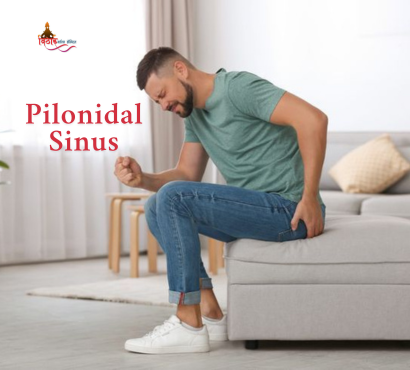Pilonidal sinus is a condition that affects many individuals, particularly young adults, and is characterized by the formation of a small tunnel or cyst in the skin, often near the tailbone. While it may start as a minor issue, if left untreated, it can lead to severe discomfort and complications. Understanding the causes, symptoms, and treatment options is crucial for effective management.
What Is a Pilonidal Sinus?
A pilonidal sinus is a small hole or tunnel in the skin that can become infected and filled with pus, leading to the formation of a cyst or abscess. It typically occurs in the cleft at the top of the buttocks and is more common in men than women. The condition can cause significant pain and may require surgical intervention if it becomes chronic or recurrent.
Causes of Pilonidal Sinus
The exact cause of pilonidal sinus is not entirely understood, but several factors contribute to its development:
- Ingrown hairs: Hair penetrating the skin can cause an inflammatory response.
- Friction and pressure: Prolonged sitting or activities that cause friction in the buttock area can contribute.
- Hormonal changes: Particularly during puberty, can increase the risk.
- Obesity: Excess weight can increase pressure and friction in the area.
- Sedentary lifestyle: Lack of movement can exacerbate the condition.
Symptoms of Pilonidal Sinus
Recognizing the symptoms early can lead to prompt treatment:
- Pain and swelling near the tailbone
- Redness and tenderness around the affected area
- Pus or blood draining from the sinus
- Foul odor from the discharge
- Fever in case of infection
Diagnosis
Diagnosis typically involves a physical examination of the affected area. In some cases, imaging tests like ultrasound or MRI may be used to assess the extent of the sinus tract and plan for surgical intervention if necessary.
Treatment Options
Conservative Treatment
For mild cases without significant infection, non-surgical approaches may be recommended:
- Warm compresses: To alleviate discomfort.
- Maintaining hygiene: Keeping the area clean and dry.
- Hair removal: Regular shaving or laser hair removal to prevent hair from entering the sinus.
Surgical Treatment
Surgery is often necessary for chronic or recurrent cases:
- Incision and drainage: A minor procedure to drain abscesses.
- Excision: Removal of the sinus tract, which can be done through various techniques:
- Open surgery: The wound is left open to heal naturally.
- Closed surgery: The wound is closed with sutures after excision.
- Laser surgery: A minimally invasive option with faster recovery and less scarring.
The choice of procedure depends on the severity of the condition and the surgeon’s recommendation.
Post-Operative Care
Proper care after surgery is crucial for healing and preventing recurrence:
- Wound care: Keeping the area clean and dry, changing dressings as advised.
- Pain management: Using prescribed medications to manage discomfort.
- Avoiding prolonged sitting: To reduce pressure on the area.
- Regular follow-up: Monitoring healing progress with your healthcare provider.
Prevention
To prevent the occurrence or recurrence of pilonidal sinus:
- Maintain hygiene: Regular cleaning of the area.
- Hair removal: Regular shaving or laser treatments.
- Weight management: Maintaining a healthy weight to reduce pressure.
- Avoid prolonged sitting: Taking breaks to stand and move around.
Pilonidal sinus is a manageable condition with appropriate treatment. Early diagnosis and intervention can prevent complications and improve quality of life. If you experience symptoms, consult a healthcare professional to determine the best course of action.
FAQs
- Can pilonidal sinus heal without surgery?
In mild cases, conservative treatments may help, but surgery is often required for chronic or recurrent cases to prevent complications.
- Is pilonidal sinus surgery covered by insurance in India?
Many health insurance policies in India cover pilonidal sinus surgery, but it’s advisable to check with your provider for specific coverage details.
- What is the recovery time after pilonidal sinus surgery?
Recovery time varies depending on the surgical method used. Minimally invasive procedures like laser surgery may have shorter recovery periods compared to traditional open surgeries.

